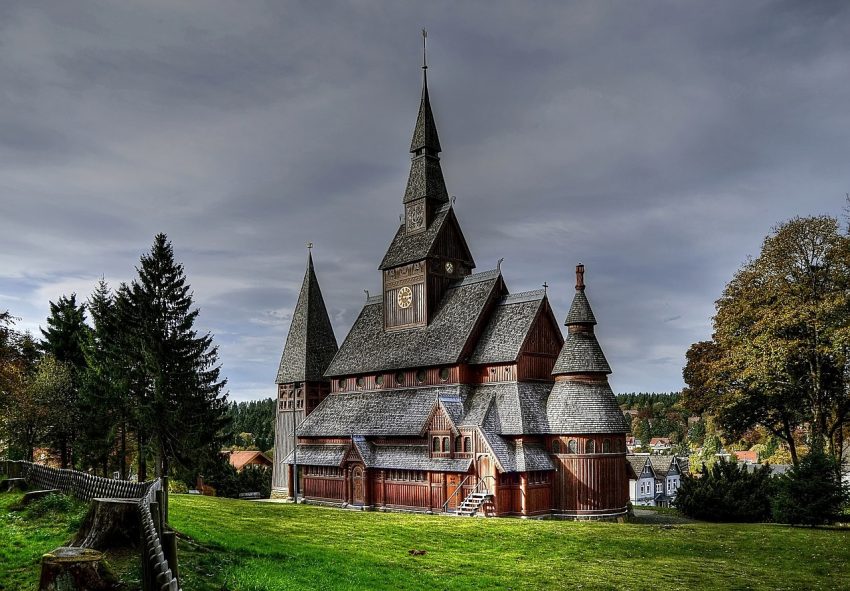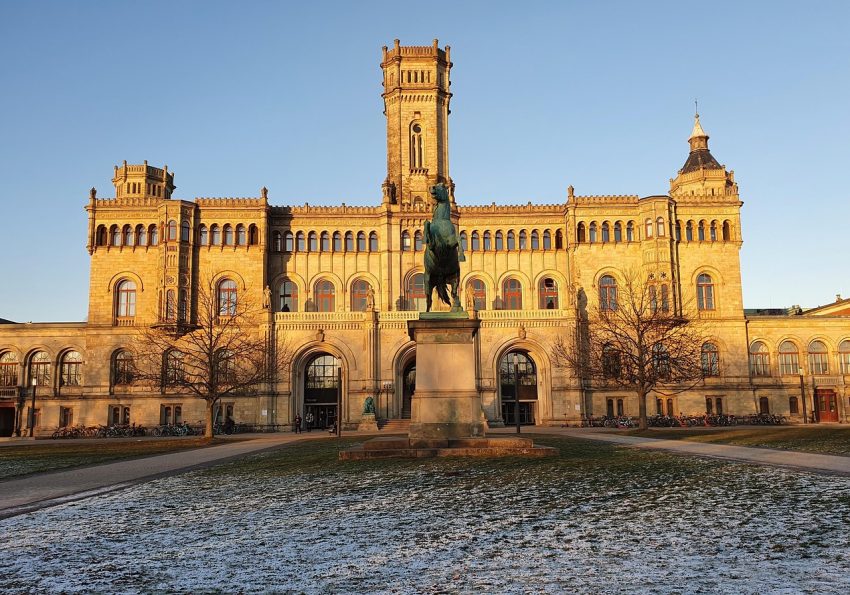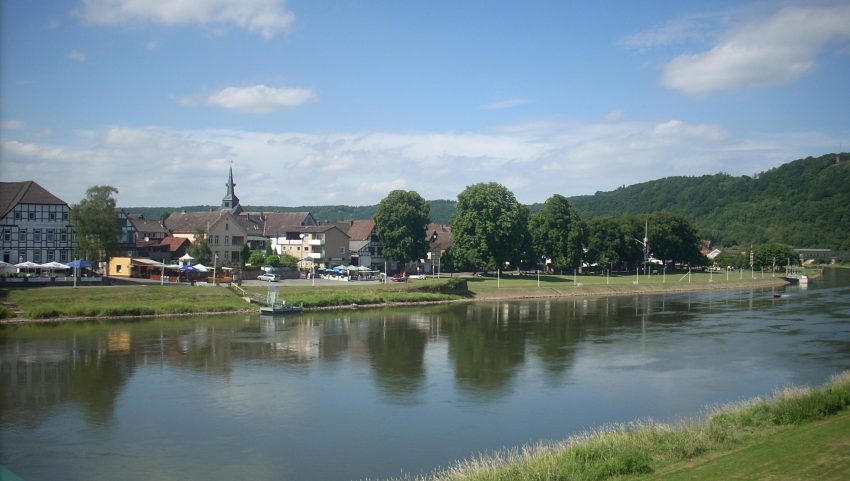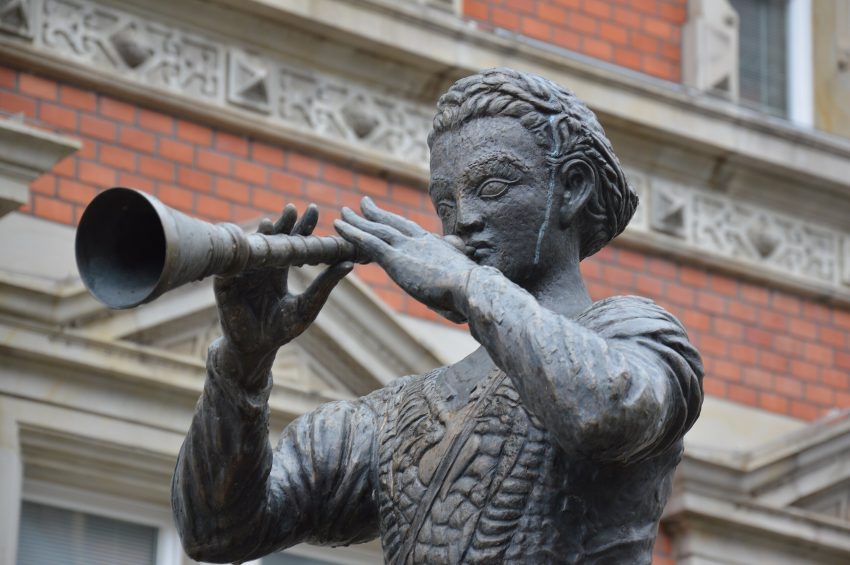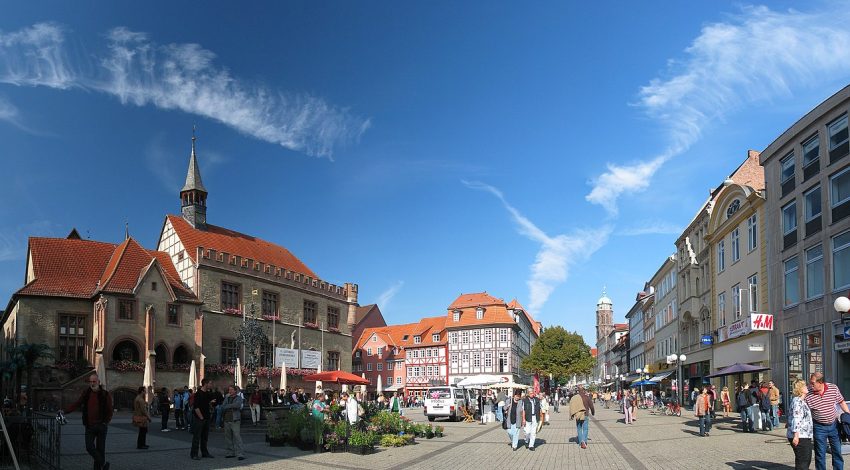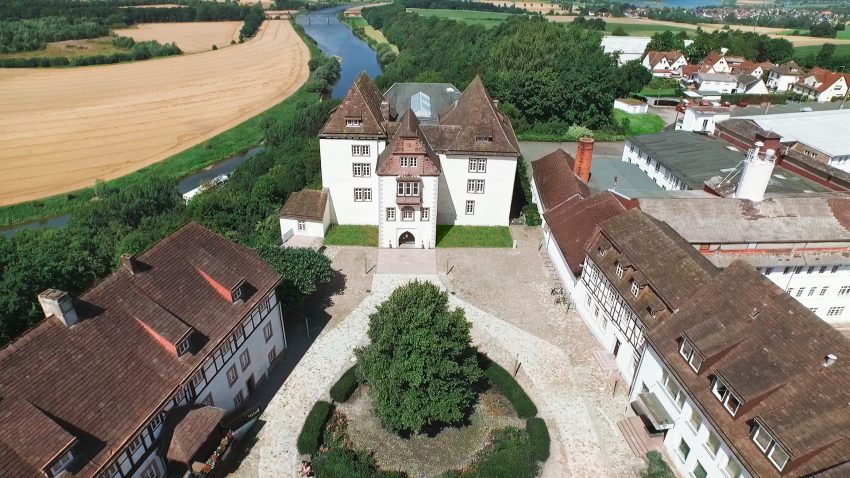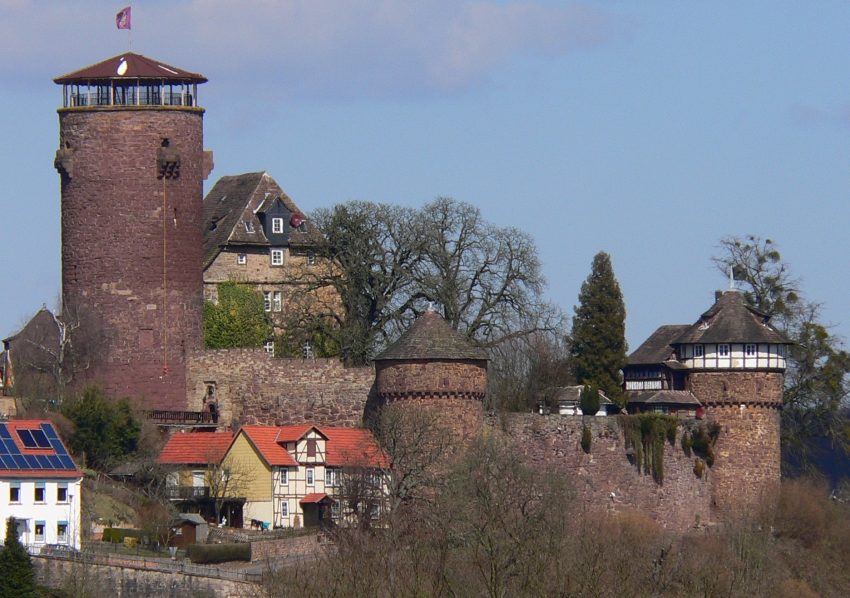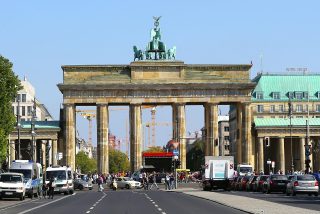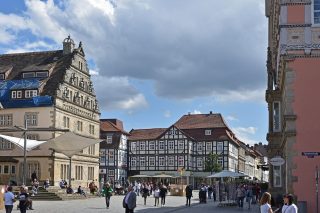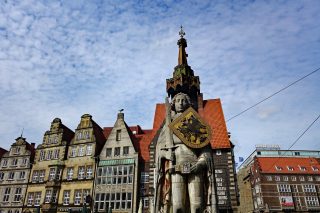Braunschweig, Germany: The Ultimate Travel Guide 2026

Braunschweig, located in the Bremen & Lower Saxony region, is a vibrant city with a mix of historical landmarks and modern urban life. Its compact city center is ideal for walking, with highlights like Burgplatz, the impressive Brunswick Cathedral, and the iconic Lion Statue creating a strong sense of heritage and local pride. The surrounding streets offer a blend of medieval charm and contemporary shopping, cafés, and public art. It’s a great destination for travelers who want to explore a lively city with a strong cultural identity.
The city also has a thriving museum and arts scene. The Herzog Anton Ulrich Museum features one of the oldest art collections in Europe, while the Happy Rizzi House adds a splash of pop-art whimsy to the cityscape. Along the Oker River, you’ll find peaceful green areas and even the option for a relaxing boat ride. Whether you’re there for a day trip or a longer stay, Braunschweig offers a rich variety of experiences in a manageable and welcoming setting.
Table of Contents
- History of Braunschweig
- Best things to do and See in Braunschweig
- Braunschweig: Burgplatz and Brunswick Lion
- Braunschweig: Dankwarderode Castle
- Braunschweig: Brunswick Cathedral
- Braunschweig: Herzog Anton Ulrich Museum
- Braunschweig: Altstadtmarkt and Old Town Hall
- Braunschweig: Happy Rizzi House
- Braunschweig: Magniviertel
- Braunschweig: Oker River and Boat Tour
- Braunschweig: State Natural History Museum
- Braunschweig: Theater and Culture Scene
- 10 Best Day Trips from Braunschweig
- Where to Stay in Braunschweig
- Best Time to Visit Braunschweig
- How to get to Braunschweig
History of Braunschweig
Braunschweig: Early Origins and Medieval Formation
Braunschweig’s origins trace back to the early 9th century as a small settlement near the Oker River. It began to gain importance in the 11th century, especially under the rule of Henry the Lion, Duke of Saxony and Bavaria. Under his leadership, Braunschweig developed into a powerful ducal residence, and several key structures were built, including the Brunswick Cathedral and Dankwarderode Castle. By the 12th century, the city had grown into a thriving medieval center of trade, crafts, and political influence.
Braunschweig: Hanseatic Power and Urban Expansion
In the late Middle Ages, Braunschweig became a prominent member of the Hanseatic League, a powerful alliance of trading cities in northern Europe. This brought economic prosperity and greater autonomy, allowing the city to expand and fortify itself. The medieval period saw the rise of merchant guilds, civic institutions, and the construction of Gothic churches and townhouses. The city was divided into several independent quarters, each with its own governance, which reflected the complex urban structure of the time.
Braunschweig: Reformation and Political Change
Braunschweig embraced the Reformation in the 16th century, becoming an important Protestant city. The shift brought religious and educational reform, as well as architectural developments reflecting the new cultural values. The city also experienced periods of internal conflict and power struggles, particularly between the civic authorities and the ducal rulers. In the 17th century, Braunschweig was gradually integrated into the expanding influence of the Duchy of Brunswick-Lüneburg.
Braunschweig: Enlightenment to Industrialization
During the 18th and 19th centuries, Braunschweig became known for its contributions to science, literature, and the Enlightenment. It was home to notable figures such as mathematician Carl Friedrich Gauss. The city modernized with the arrival of railways, new schools, and public institutions. Industrial growth in the 19th century transformed Braunschweig into a hub for manufacturing, printing, and engineering, laying the groundwork for its role in Germany’s economic development.
Braunschweig: War, Reconstruction, and Modern Identity
Braunschweig suffered extensive damage during World War II, with large portions of the historic city center destroyed by bombing raids. Post-war reconstruction efforts focused on restoring key landmarks like the cathedral and castle, while new districts and modern infrastructure reshaped the city. Today, Braunschweig is a regional center of education, research, and innovation. Its blend of reconstructed history and modern urban planning reflects a city that has continually adapted while honoring its deep-rooted past.

Moira & Andy
Hey! We're Moira & Andy. From hiking the Camino to trips around Europe in Bert our campervan — we've been traveling together since retirement in 2020!
Visiting Braunschweig for the first time and wondering what are the top places to see in the city? In this complete guide, I share the best things to do in Braunschweig on the first visit. To help you plan your trip, I have also included an interactive map and practical tips for visiting!
This website uses affiliate links which earn a small commission at no additional cost to you.
Best things to do and See in Braunschweig
1. Braunschweig: Burgplatz and Brunswick Lion
Burgplatz is the historical heart of Braunschweig and one of its most picturesque squares. It’s surrounded by key landmarks including the Brunswick Cathedral (Dom St. Blasii), the ducal Dankwarderode Castle, and several beautifully preserved half-timbered houses. At the center stands the famous Brunswick Lion, a symbol of the city’s power during the reign of Henry the Lion in the 12th century.
The square is a peaceful spot to soak in Braunschweig’s medieval character. Whether you’re visiting for architectural photography or simply enjoying the quiet cobblestone charm, Burgplatz offers a strong sense of place. Throughout the year, the square also hosts seasonal events such as the Christmas market, adding an extra layer of atmosphere.
2. Braunschweig: Dankwarderode Castle
Dankwarderode Castle stands on Burgplatz and was once the residence of Henry the Lion. Though much of the original structure was reconstructed in the 19th century, it remains an important symbol of the city’s ducal history. Inside, visitors can explore parts of the collection of the Herzog Anton Ulrich Museum, including medieval and Renaissance art.
The castle’s mix of Romanesque features and later restorations gives it a unique character. It’s a quiet yet fascinating stop that offers a look at Braunschweig’s aristocratic past and provides great context for understanding the city’s early influence in the region.
3. Braunschweig: Brunswick Cathedral
Brunswick Cathedral, also known as St. Blasii, is one of the most significant churches in northern Germany. Founded by Henry the Lion in the 12th century, it combines Romanesque and Gothic styles and is the final resting place of both Henry and his wife Matilda. The interior is solemn and richly detailed, with medieval frescoes, a beautiful altarpiece, and a striking crucifix.
Visitors are often drawn to the cathedral for its sense of continuity across the centuries. It’s not only a religious site but also a place of deep cultural and historical resonance, standing quietly at the crossroads of Braunschweig’s political, spiritual, and architectural heritage.
4. Braunschweig: Herzog Anton Ulrich Museum
This museum is one of Germany’s oldest art collections, boasting a remarkable range of European paintings, sculptures, and decorative arts. Its collection includes masterpieces by Rembrandt, Rubens, Vermeer, and Cranach, making it a must-visit for art lovers. The museum also holds valuable items from antiquity to the Baroque era.
The building itself is modern and elegant, offering a calm and well-organized space to explore centuries of art history. Whether you’re a seasoned museum-goer or simply curious, the Herzog Anton Ulrich Museum is both accessible and rewarding, giving insight into the city’s deep ties to culture and scholarship.
5. Braunschweig: Altstadtmarkt and Old Town Hall
Altstadtmarkt, or the Old Town Market, is another key square in Braunschweig and one of the best places to experience the city’s Hanseatic charm. It features the Gothic Old Town Hall (Altstadtrathaus), whose façade is lined with pointed arches and intricate stonework. The square also houses the Gewandhaus and the Martinikirche, creating a striking historical ensemble.
The market square remains lively today, hosting weekly markets, small festivals, and outdoor seating for cafés. It’s a great place to stop, rest, and watch daily life unfold while surrounded by the textures of Braunschweig’s rich past.
6. Braunschweig: Happy Rizzi House
The Happy Rizzi House is a pop-art explosion in the middle of Braunschweig’s traditional architecture. Designed by American artist James Rizzi and architect Konrad Kloster, it’s a whimsical building covered in colorful, cartoon-like faces, hearts, and playful shapes. Though it’s not open to the public inside, it’s a popular photo spot and symbol of the city’s creative energy.
Located in the Magniviertel district, it’s a fun contrast to the surrounding medieval and modern buildings. The Happy Rizzi House brings an unexpected artistic twist and reflects Braunschweig’s willingness to blend the traditional with the avant-garde.
7. Braunschweig: Magniviertel
The Magniviertel is one of Braunschweig’s most charming and atmospheric quarters. Centered around the Romanesque Magnikirche, the area is full of narrow streets, small shops, galleries, and half-timbered houses. It’s a popular neighborhood for browsing boutiques or sitting in a café with views of historic façades.
This area also hosts cultural events and seasonal markets, making it one of the liveliest parts of the city. For those who want to experience Braunschweig at a local pace, Magniviertel offers a lovely mix of authenticity, character, and quiet beauty.
8. Braunschweig: Oker River and Boat Tour
The Oker River circles the city center and is an essential part of Braunschweig’s landscape. One of the best ways to experience it is by taking a boat tour or renting a canoe or pedal boat. These relaxing trips offer a different perspective of the city—lush greenery, historic bridges, and glimpses of old city walls.
The riverside paths are also popular for cycling and walking. Whether you’re on the water or beside it, the Oker provides a natural retreat right in the city and is especially appealing in spring and summer when the surroundings are vibrant and full of life.
9. Braunschweig: State Natural History Museum
Braunschweig’s Natural History Museum is a family-friendly destination with exhibits on geology, biology, and paleontology. Highlights include a collection of dinosaur skeletons, regional wildlife displays, and interactive stations for younger visitors. It offers a well-rounded educational experience that appeals to all ages.
The museum is compact but informative, making it an easy addition to any itinerary, especially for families. Its focus on both local and global natural history gives visitors a broader context for understanding the region’s environment and scientific contributions.
10. Braunschweig: Theater and Culture Scene
Braunschweig has a thriving cultural life, with the Staatstheater Braunschweig at its center. This state theater stages operas, plays, ballets, and concerts throughout the year. It’s one of the oldest and most respected theaters in Germany, offering both classic and contemporary productions.
In addition to the main theater, the city supports a range of smaller venues, music events, and art exhibitions. Whether you’re looking for a grand night out or a more experimental performance, Braunschweig’s arts scene is dynamic and deeply embedded in its identity.
